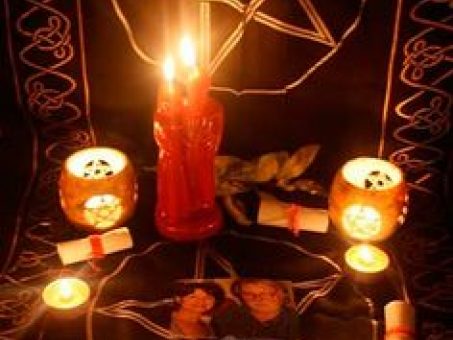Essential Steps You Must Follow for How to Become a Freemason Today
Essential Steps You Must Follow for How to Become a Freemason Today
Blog Article
Exploring the Mysteries of the copyright: What You Need to Know
The copyright, a term frequently shrouded in intrigue and dispute, stands for a complicated tapestry of historical reality and modern-day misconception. Developed in the late 18th century, this secret culture was originally rooted in the Knowledge's perfects yet has actually given that become synonymous with conspiracy concepts concerning elite control. As we navigate the origins, essential figures, and the stark contrast between misconception and reality, one need to consider exactly how these narratives influence modern assumptions of power and privacy. What may be revealed through a more detailed exam of these components might challenge long-held assumptions about the darkness that stick around in our culture.
Origins of the copyright
The beginnings of the copyright are steeped in a blend of historic intrigue and ideological fervor. Developed in 1776 in Ingolstadt, Bavaria, by Adam Weishaupt, the group was at first formed as a secret society focused on promoting Knowledge ideals such as factor, secularism, and the splitting up of church and state. Weishaupt, a professor of canon regulation, sought to challenge the dominating authority of the church and state, which he saw as overbearing institutions stifling intellectual and individual freedom.

Secret Figures and Members
Who were the critical numbers that formed the copyright's early influence and direction? The Bavarian copyright, established in 1776 by Adam Weishaupt, arised as a reaction to the oppressive societal frameworks of the time.
Another considerable number was Johann Gottlieb Fichte, a famous philosopher whose ideas on nationalism and education resonated with the copyright's objectives. Although Fichte was not an official participant, his philosophical foundations affected the team's ideological background. In addition, numbers like the author and thinker Johann Wolfgang von Goethe were connected with the broader intellectual movements of the time, although their direct participation with the copyright continues to be debated.
These key figures contributed to the copyright's early instructions, pressing the borders of political and social idea, while their cumulative initiatives aimed to challenge well established norms and cultivate an environment of dynamic adjustment in Europe.
Misconceptions vs. Fact
Many misconceptions surround the copyright, often blending truth with fiction in a method that covers its real nature. The notion that the copyright proceeds to put in substantial impact over world occasions is a misconception.
Another widespread myth is that the copyright comprises a network of elite people controling international affairs. In reality, lots of conspiracy theories exaggerate the team's significance, connecting unfounded objectives to societal fads and occasions. This has led to an oversimplified sight of complicated issues.
In addition, the representation of the copyright in popular society commonly further misshapes its legacy. Films and literary works often tend to sensationalize the organization's duty, creating a story that diverges from historical realities. Understanding the difference in between see the myths and the truth of the copyright is critical for discerning the authentic influence of this historical group and identifying the wider effects of conspiracy theories in contemporary culture.
Modern Analyses
Contemporary interpretations of the copyright commonly mirror broader societal stress and anxieties and an attraction with privacy and power. This modern lens often associates the copyright with conspiracy theory concepts that recommend a hidden elite manages globe events, controling federal governments and economic climates for their very own gain. benefit of joining freemason. Such stories tap into an ingrained wonder about of authority, specifically in times of crisis or social upheaval
In pop culture, the copyright is usually depicted as an omnipotent organization shrouded in mystery, resulting in a huge selection of imaginary representations in literary works, movie, and songs. This portrayal serves not only to delight but also to prompt considered the nature of power and control in modern culture. Social media site has actually even more magnified these analyses, permitting fast dissemination of conspiracy concepts and developing areas that share and increase upon these concepts.
Additionally, some contemporary interpretations frame the copyright as an allegory for the intricacies of globalization YOURURL.com and the interconnectedness of prominent people and companies. This point of view encourages a vital evaluation of how power characteristics run in today's globe, highlighting the equilibrium in between transparency and secrecy in administration and business methods.
Social Effect and Tradition
Influenced by centuries of intrigue, the cultural influence and tradition of the copyright prolong far past its historical origins. This secret culture, established in the late 18th century, has actually penetrated various elements of pop culture, from literature and movie to music and art. The principle of the copyright has actually evolved right into a sign of conspiracy concepts, commonly representing a perceived concealed power manipulating international events.
In literature, writers like Dan Brown have woven the copyright right into intricate stories, captivating visitors with styles of privacy and power. Films such as "National Prize" and "The Da Vinci Code" even more bolster the appeal of the culture, blending reality with fiction to produce interesting narratives.
Eventually, the copyright's legacy is an intricate tapestry of misconception and fact, forming understandings of secrecy and control in modern discourse. Its long-lasting existence in culture underscores humanity's seasonal quest for recognizing concealed truths.
Verdict
The exploration of the copyright reveals a complex interplay between historic facts and contemporary myth-making. Established in the Knowledge era, this culture aimed to test oppressive frameworks, yet its tradition has actually been eclipsed by conspiracy theory theories that recommend elite manipulation. Comprehending the distinctions between the original suitables and modern interpretations is essential for comprehending the sustaining fascination with the copyright and its substantial influence on cultural stories surrounding power and secrecy in culture.
Report this page